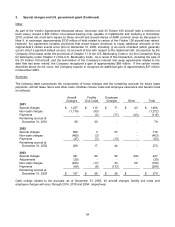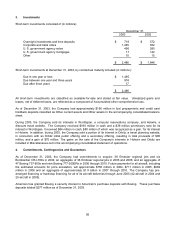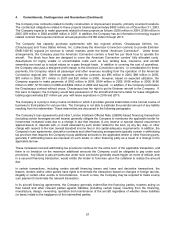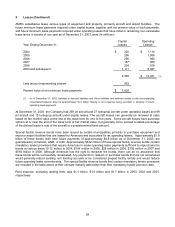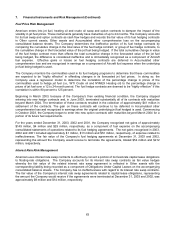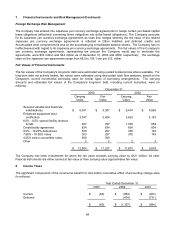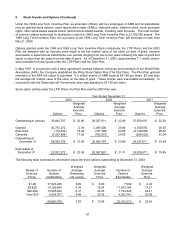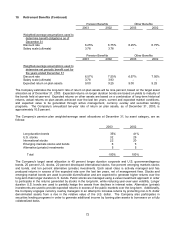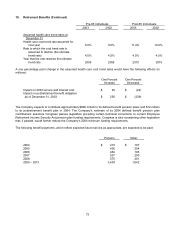American Airlines 2003 Annual Report Download - page 65
Download and view the complete annual report
Please find page 65 of the 2003 American Airlines annual report below. You can navigate through the pages in the report by either clicking on the pages listed below, or by using the keyword search tool below to find specific information within the annual report.63
7. Financial Instruments and Risk Management (Continued)
Fuel Price Risk Management
American enters into jet fuel, heating oil and crude oil swap and option contracts to dampen the impact of the
volatility in jet fuel prices. These instruments generally have maturities of up to 24 months. The Company accounts
for its fuel swap and option contracts as cash flow hedges and records the fair value of its fuel hedging contracts
in Other current assets, Other assets and Accumulated other comprehensive loss on the accompanying
consolidated balance sheets. The Company determines the ineffective portion of its fuel hedge contracts by
comparing the cumulative change in the total value of the fuel hedge contract, or group of fuel hedge contracts, to
the cumulative change in the forecasted value of the jet fuel being hedged. If the total cumulative change in value
of the fuel hedge contract more than offsets the total cumulative change in the forecasted value of the jet fuel
being hedged, the difference is considered ineffective and is immediately recognized as a component of Aircraft
fuel expense. Effective gains or losses on fuel hedging contracts are deferred in Accumulated other
comprehensive loss and are recognized in earnings as a component of Aircraft fuel expense when the underlying
jet fuel being hedged is used.
The Company monitors the commodities used in its fuel hedging programs to determine that these commodities
are expected to be “highly effective” in offsetting changes in its forecasted jet fuel prices. In doing so, the
Company uses a regression model to determine the correlation of the percentage change in prices of the
commodities used to hedge jet fuel (i.e., WTI Crude oil and NYMEX Heating oil) to the percentage change in
prices of jet fuel over a 12 to 24 month period. The fuel hedge contracts are deemed to be “highly effective” if this
correlation is within 80 percent to 125 percent.
Beginning in March 2003, because of the Company’s then existing financial condition, the Company stopped
entering into new hedge contracts and, in June 2003, terminated substantially all of its contracts with maturities
beyond March 2004. The termination of these contracts resulted in the collection of approximately $41 million in
settlement of the contracts. The gain on these contracts will continue to be deferred in Accumulated other
comprehensive loss and recognized in earnings when the original underlying jet fuel hedged is used. Commencing
in October 2003, the Company began to enter into new option contracts with maturities beyond March 2004 for a
portion of its future fuel requirements.
For the years ended December 31, 2003, 2002 and 2001, the Company recognized net gains of approximately
$149 million, $4 million and $29 million, respectively, as a component of fuel expense on the accompanying
consolidated statements of operations related to its fuel hedging agreements. The net gains recognized in 2003,
2002 and 2001 included approximately $1 million, $13 million and $72 million, respectively, of expense related to
ineffectiveness. The fair value of the Company’s fuel hedging agreements at December 31, 2003 and 2002,
representing the amount the Company would receive to terminate the agreements, totaled $54 million and $212
million, respectively.
Interest Rate Risk Management
American uses interest rate swap contracts to effectively convert a portion of its fixed-rate capital lease obligations
to floating-rate obligations. The Company accounts for its interest rate swap contracts as fair value hedges
whereby the fair value of the related interest rate swap agreement is reflected in Other assets with the
corresponding liability being recorded as a component of Obligations Under Capital Leases on the accompanying
consolidated balance sheets. The Company has no ineffectiveness with regard to its interest rate swap contracts.
The fair value of the Company’s interest rate swap agreements related to capital lease obligations, representing
the amount the Company would receive if the agreements were terminated at December 31, 2003 and 2002, was
approximately $9 million and $14 million, respectively.



